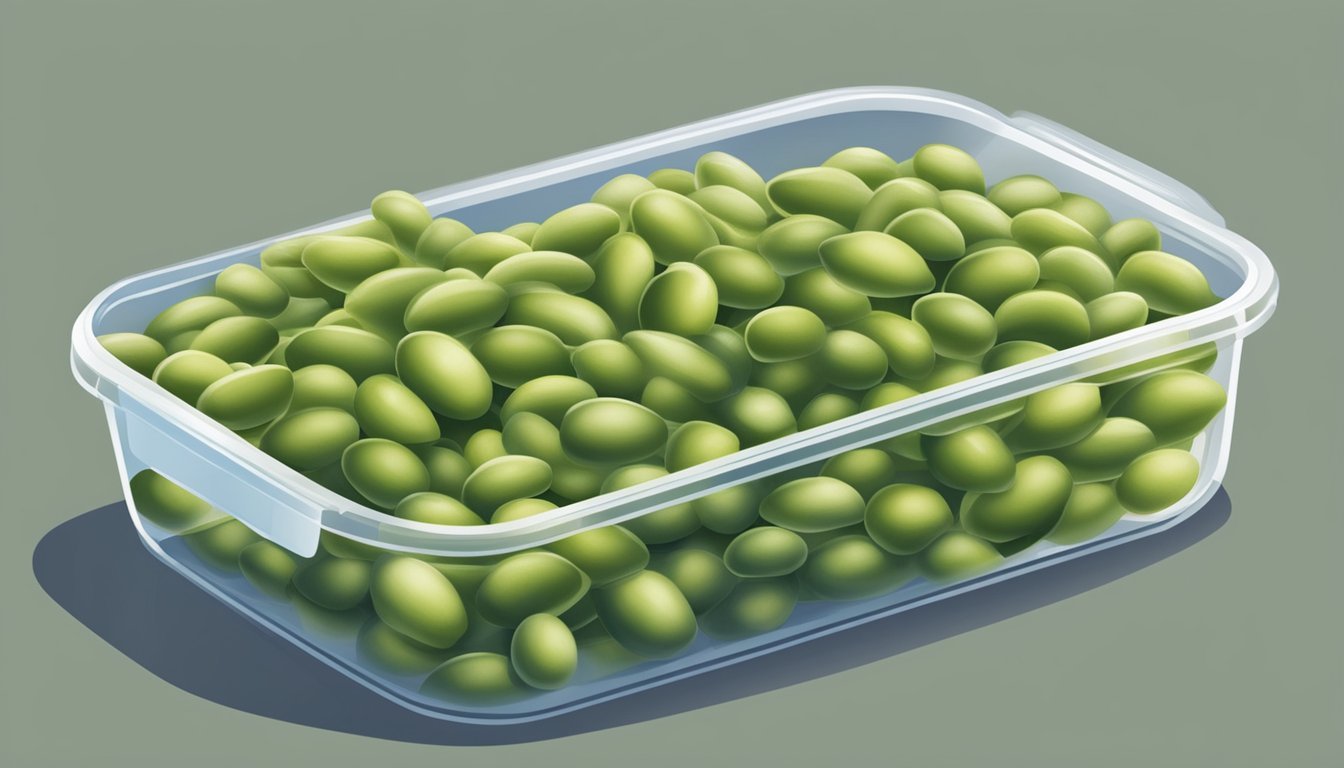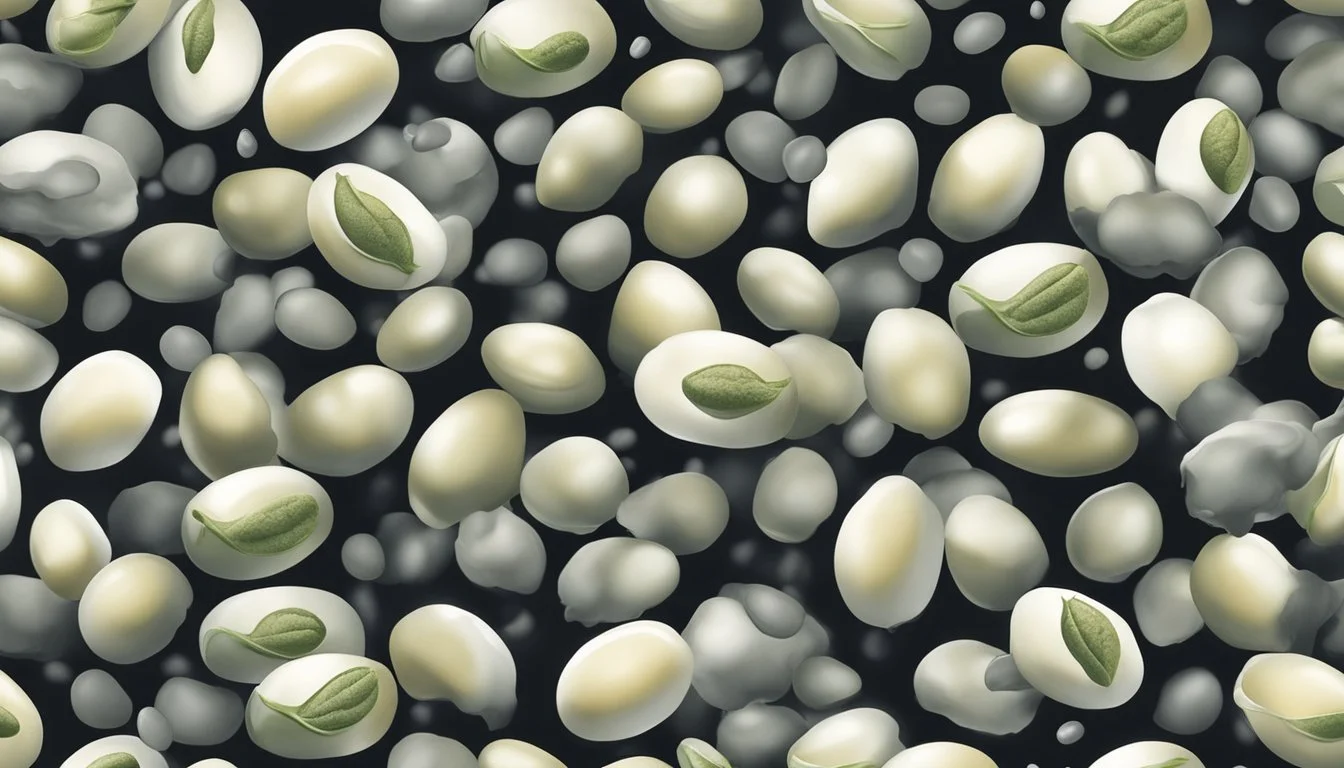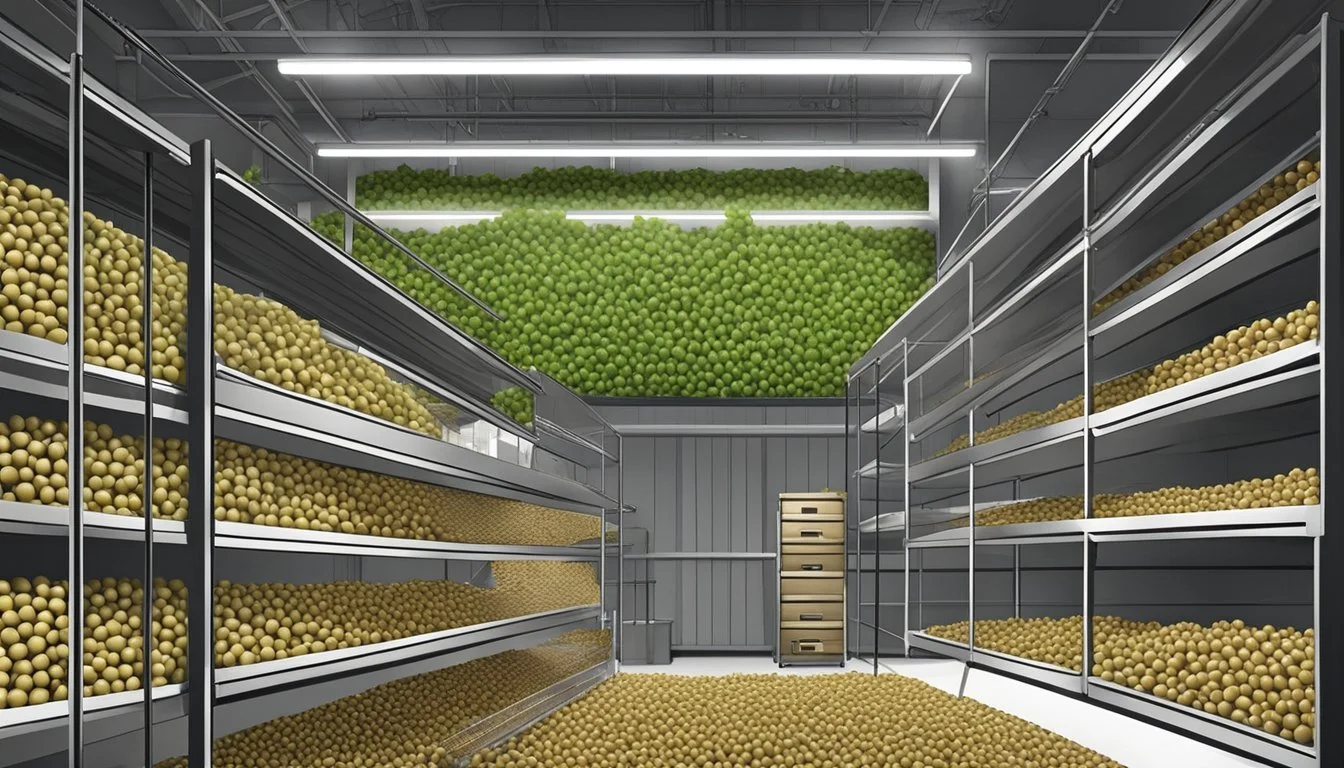How Long Do Soybeans Last?
Shelf Life and Storage Tips
Soybeans, a versatile and nutritious legume, are an integral part of many diets worldwide. The shelf life of soybeans varies depending on their form—whether they are fresh, dried, or cooked. For dried soybeans, which are often used for their extended shelf life, quality and safety are retained best when they're stored properly. At room temperature, dried soybeans can maintain their best quality for about 2 to 3 years. Beyond this timeframe, they tend to remain safe to consume, but their quality may begin to decline.
Effective storage is crucial for preserving soybeans' longevity. To ensure dried soybeans last as long as possible, it is recommended to keep them in a cool, dry place away from direct sunlight. The package should be kept tightly sealed to prevent moisture from compromising the soybeans' integrity. Fresh soybeans, on the other hand, have a much shorter shelf life and should ideally be consumed within a few days of purchase. Cooked soybeans can be refrigerated for up to five days, or they may be frozen to extend their usability up to six months, provided they are stored in an airtight container.
Given these guidelines, anyone looking to maintain the shelf life and quality of their soybeans should be mindful of the moisture content and storage conditions. With proper storage techniques, the nutritional benefits and flavor of soybeans can be enjoyed well into the future without compromise.
Understanding Soybeans
Soybeans play a pivotal role as a global source of protein and nutrition. This section delves into the diverse varieties of this legume and the substantial nutritional contribution it makes to diets worldwide.
Varieties and Characteristics
Soybeans, Glycine max, exhibit a vast range of characteristics across different cultivars. The varieties may differ in maturity rates, plant height, and potential yield, typically featuring 3 to 5-foot tall plants with 50 to 100 pods each under normal conditions. Producers select soybean varieties based on factors such as climate adaptability, resistance to disease, and desired maturity time.
The physical composition includes typically about three seeds (how long do seeds last?) per pod, with the plant's ability to produce a significant number of pods that contribute to the overall yield quality. Soybeans are predominantly self-fertilizing, reducing the variability found in the species and contributing to the uniformity in flavor and nutrition profile across the same variety.
Nutritional Value and Proteins
Nutritionally, soybeans are esteemed for their high protein content, supplying all the essential amino acids required in the human diet, thereby serving as an effective meat alternative. An average soybean seed is composed of approximately:
36% Protein
18% Oil
Carbohydrates
Minerals, such as potassium, magnesium, and calcium
Soybeans also provide isoflavones, compounds associated with numerous health benefits. The overall nutritional value of soybeans is high, making them a cornerstone in nutritional strategies for increasing protein consumption globally. When considering quality in terms of nutritional value, soybeans are unrivaled in plant-based protein offerings, both in quantity and quality.
Storage Fundamentals
Proper storage of soybeans is critical for maintaining their quality and longevity. The pivotal factors include controlling moisture content and temperature, employing sound practices to prevent mold, and using appropriate containers.
Ideal Storage Conditions
Soybeans should be stored in conditions where both temperature and humidity can be controlled. Ideal storage conditions involve:
Temperature: They should be kept in a cool place, ideally below 60 degrees Fahrenheit, to prolong their storage life.
Humidity: The storage area should have low humidity to prevent spoilage.
Containers: An airtight container is recommended to protect the soybeans from moisture and pests.
Light Exposure: Store soybeans away from direct sunlight to maintain oil quality and prevent heating, which can raise the moisture content.
Moisture and Mold Prevention
Managing moisture is paramount when storing soybeans to prevent mold growth. Here are specific guidelines:
Moisture Content: They should be dried to a moisture content of 12% or less for long-term storage. If soybeans are stored over one planting season, a maximum of 13% is acceptable for up to six months if the temperature is kept low.
Drying Soybeans: Ensure that the soybeans are dried uniformly to avoid pockets of moisture which can lead to mold.
Storage Temperature: Keeping the storage temperature even and cool helps prevent the deterioration of the soybeans’ oil quality.
Mold Prevention: Regular checks with a portable moisture tester can help in monitoring the condition and preventing mold. Make adjustments to storage conditions as necessary based on these readings.
By adhering to these practices, one can significantly extend the storage life of soybeans and maintain their quality.
Shelf Life Determinants
The longevity of soybeans is influenced by various factors, with temperature and storage practices being the most significant. Proper management of these elements is crucial in preserving the shelf life and quality of soybeans.
Impact of Temperature on Duration
Temperature plays a pivotal role in the duration soybeans remain consumable. Heat accelerates spoilage due to increased microbial activity, which diminishes the quality and best quality duration of the product. In general, dry soybeans stored at a cool room temperature maintain their best quality for about 2 to 3 years. If soybeans are refrigerated, cooked soybeans last up to five days, whereas frozen soybeans can last for up to six months.
Cool and Dry Storage (at room temperature): Maintains best quality for 2-3 years
Refrigerated (cooked soybeans): Lasts up to 5 days
Frozen (cooked soybeans): Remains good for up to 6 months
Effects of Storage Practices
The way soybeans are stored has a direct effect on their shelf life. Beans stored in an airtight container with minimal oxygen exposure retain their quality over longer periods. They should be kept dry and protected from conditions that could lead to spoilage. For long-term storage, ensuring an oxygen-free environment and a consistent, cool temperature extends the shelf life significantly, with dry beans remaining edible for 25 to 30 years under optimal conditions.
Airtight Containers: Imperative for long-term quality
Oxygen-Free Packaging: Extends shelf life to 25-30 years
Consistent, Cool Temperature: Prevents spoilage and maintains quality
Signs of Spoilage
When assessing the spoilage of soybeans, one can look for visual changes or off odors. These indicators are often the first signs of spoiled beans.
Visual Indicators
Soybeans, when spoiled, may exhibit several visual signs that shouldn't be ignored:
Color Changes: Beans that have turned a significantly darker color than their original, natural hue may be an indication of spoilage.
Mold Growth: The appearance of mold on the surface of the soybeans is a clear sign that they have gone bad. Mold may appear as fuzzy spots in white, green, or black.
Olfactory Indicators
The scent of soybeans can be a telltale sign of their condition:
Off Odor: A rancid or sour smell is often associated with spoilage. This may signal that the fats within the soybeans have started to oxidize.
Rancidity: Beans that give off a sharp, bitter, or otherwise unpleasant aroma may be rancid, which indicates spoilage and renders them unsuitable for consumption.
Preventing Spoilage
The longevity of soybeans hinges on meticulous storage methods to prevent spoilage. Key to their preservation are optimal handling and drying procedures, coupled with the use of proper packaging and containers that safeguard against moisture and pests.
Handling and Drying Soybeans
When managing soybeans, it's paramount that they are handled gently to minimize damage. The seeds are prone to splitting and breakage during mechanical handling, so using a bucket elevator can be preferable for conveying, as it commonly results in the least breakage. For drying soybeans, it is essential to achieve a moisture content of 13% or less for safe winter storage. One can utilize bin fans for drying soybeans with less than 15% moisture. It's also important to maintain grain temperatures at 35°-40°F in the winter and 40°-60°F in the summer to reduce mold and insect activity.
Proper Packaging and Containers
Selecting the right packaging and containers plays a significant role in preventing soybean spoilage. They should be stored in an airtight container or a heavy-duty plastic bag to protect against exposure to moisture. Ensuring that soybeans are in a container that does not permit air ingress curtails the risk of mold and spoilage. Regular checks of stored soybeans for any signs of heating or spoilage should be conducted, especially during the warm months where weekly inspections are advisable.
Extending Shelf Life
To maximize the shelf life of soybeans, one can implement effective refrigeration and freezing techniques and adhere to best practices for long-term storage.
Refrigeration and Freezing Techniques
Refrigerating cooked soybeans in an airtight container ensures they remain safe to consume for up to five days. When freezing, soybeans should be placed in freezer-safe containers or bags, which can extend their usability for up to six months. It's imperative to label the containers with the freezing date.
Best Practices for Long-Term Storage
For dried soybeans, maintaining shelf life hinges on cool, dry conditions in an airtight container, away from light and heat. Properly stored, the beans can last for about 2 to 3 years while retaining their quality. To thwart quality degradation, one should ensure that dried soybeans are kept in an environment that mitigates moisture and oxygen exposure.
Soybeans in Cooking
When cooking soybeans, maintaining their flavor and freshness is paramount, and it starts with proper preparation. Cooking methods can vary but should always aim for the best taste and texture.
Preparation for Cooking
Fresh Soybeans: For the optimal taste, fresh soybeans should be used within a few days of purchase.
Soaking:
Long Soak: Leaving the soybeans to soak overnight or for at least four hours will shorten cooking time and improve their digestibility.
Quick Soak: For a faster option, soybeans can be boiled for a couple of minutes and then soaked for an hour before cooking.
After soaking, the beans should be drained and rinsed with fresh water to remove any impurities.
Cooking Methods
Pressure Cooking: After soaking, soybeans can be cooked quickly in a pressure cooker—usually 10 minutes for pre-soaked beans and about 15 minutes if they've soaked for a shorter time. It is important not to fill the water above the halfway mark to prevent clogging the vent.
Stove Top: Cooking soybeans on the stove top is a slower process, often taking a few hours. Beans should be covered with water, brought to a boil, and then simmered until tender.
Cooked Soybeans:
Refrigeration: They last 3-4 days in the fridge, retaining their flavor and freshness.
Freezing: For long-term storage, cooked soybeans can be frozen. They stay safe to eat indefinitely but for best quality should be used within 9-12 months.
No matter the method, chefs should ensure soybeans are cooked thoroughly to achieve the best possible flavor and texture.
Potential Storage Challenges
Proper soybean storage is essential to minimize damage and loss of viability. Challenges often arise due to insect infestation and environmental factors, which can significantly impact quality and germination rates.
Insect Infestation
Insects pose a significant threat to stored soybeans, as they can cause damage by feeding on the soybean kernels. The presence of pests also increases the moisture and heat within the storage area, creating an environment conducive to further infestation. Aeration is critical in this regard, as well-ventilated storage can help deter insect activity. Regular monitoring is recommended to detect and address bug presence early.
Common Pests:
Weevils
Bean Beetles
Moths
Environmental Factors
Soybeans are highly sensitive to environmental conditions during storage. Excess dampness can lead to mold growth and deterioration of the soybeans, while exposure to sun or direct sunlight can raise the internal temperature of storage facilities, leading to increased moisture levels and potential spoilage.
Ideal Storage Conditions:
Temperature: Consistently cool
Moisture: Below 11% for long-term storage
Proper control of these factors ensures the maintenance of soybean viability and the prevention of germination prior to planting.
Industrial Soybean Storage
Industrial soybean storage demands meticulous management to preserve seed quality and minimize harvest losses. Ideal storage conditions hinge on controlling grain temperature and moisture to prevent mold problems and ensure the duration and quality of stored commercial soybeans.
Comparing Commercial and Home Storage
Commercial soybean storage typically involves larger volumes than home storage, necessitating more sophisticated infrastructure and management strategies. Commercial storage systems are designed to handle bulk soybeans and use natural-air drying or supplemental heat systems to maintain optimum moisture levels. Unlike smaller-scale home storage, commercial facilities must ensure quick, uniform drying to prevent spoilage. Home storage often relies on simpler methods and faces fewer complexities due to the reduced scale.
Seed beans, intended for planting, require more careful handling compared to soybeans meant for processing, as they demand a lower drying temperature, usually around 100°-110°F, to maintain their germination quality. Commercial grains can withstand higher drying temperatures, approximately 130°-140° F. Regardless of the bean type, retention time in the heat section of dryers should be less than 30 minutes to safeguard against heat damage.
Quality Considerations in Large Scale Storage
Quality of stored soybeans directly influences the final yield and profitability. Key factors include:
Moisture Content: Soybeans should be ideally stored at around 11% moisture to ensure similar storage characteristics as other cereal grains. Exceeding this moisture level raises the risk of mold growth and decreases the allowable storage time.
Temperature: Consistently managing grain temperature between 35° to 40°F during winter and around 40°F during the rest of the storage period is crucial to maintaining soybean quality.
Storage Equipment: It's imperative to level bins after harvest and avoid equipment that could damage seeds. Mechanical damage from worn augers and improper handling can accelerate quality degradation.
Aeration: Prompt aeration after filling bins removes heat and is essential for maintaining an even temperature throughout the storage facility. Ongoing aeration helps to preserve bean quality over long periods.
By adhering to these nuanced parameters, industrial storage facilities can keep soybeans in peak condition for extended periods, thus securing the quality of commercial beans and ensuring viability for seed beans.
Health and Safety Considerations
When storing soybeans, maintaining their quality is crucial for health and safety reasons. Exposure to moisture can lead to mold growth, which not only deteriorates the grain but also poses serious health risks. Ingesting moldy soybeans can cause allergic reactions and may produce mycotoxins, harmful compounds that are dangerous to human and animal health.
It's important to control moisture levels; soybeans should ideally be stored at a moisture content between 13% and 15% to prevent spoilage. At this range, the risk of mold formation is minimized. During cooler temperatures (below 60°F), soybeans can be kept at 13% moisture without significant mold problems for approximately six months.
Safety always comes first, hence why it is imperative to monitor and manage temperature within storage facilities. Soybeans should be dried at controlled temperatures to prevent damage—130°-140°F for commercial beans and 100°-110°F for seed beans—and monitored to ensure uniformity in drying.
Lastly, sanitation is a key factor in preventing bacterial and insect infestation. Facilities must be kept clean, and storage containers should be airtight to protect the soybeans from external contaminants. Here's a summary for quick reference:
Moisture Control: Keep between 13-15% to limit mold.
Temperature Management: Dry at 130°-140°F for commercial beans, 100°-110°F for seeds.
Sanitation: Maintain cleanliness and use airtight containers.
Proper handling and storage of soybeans are essential to prevent health risks associated with mold and bacteria, ensuring that the soybeans remain safe for consumption.










